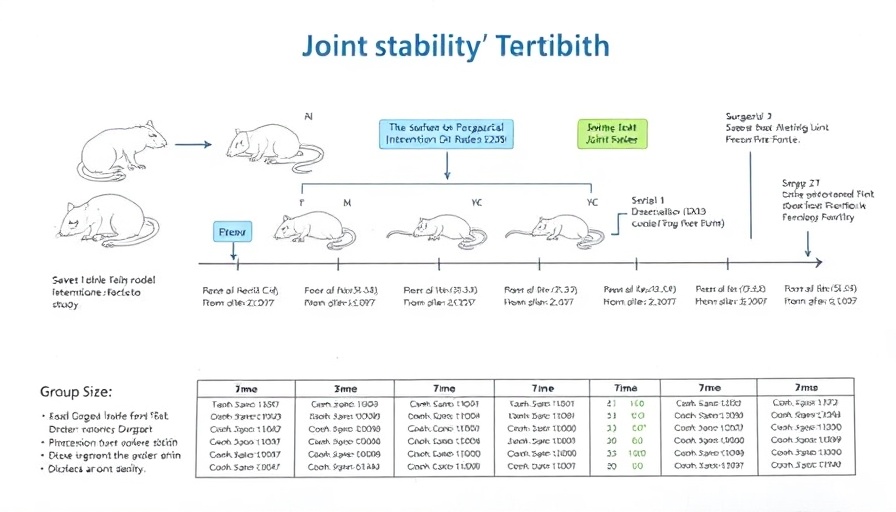
Understanding Joint Instability in Knee Osteoarthritis
Knee osteoarthritis (OA) is a common form of arthritis that affects millions of individuals worldwide. Characterized by the wearing down of cartilage, OA can lead to joint instability, which is a significant contributor to inflammatory pain. As our understanding of this condition evolves, recent studies have shed light on how controlling joint instability can alleviate pain and improve quality of life for those suffering from early-stage knee OA.
The Link Between Joint Instability and Pain
Joint instability occurs when the structures surrounding a joint do not function properly, leading to excessive movement and stress on the joint. In knee OA, this instability can exacerbate inflammation, causing pain and further limiting mobility. Research indicates that by stabilizing the knee joint through therapeutic exercises, braces, or assistive devices, patients can significantly reduce inflammatory responses, consequently lessening pain.
Highlighting Effective Techniques for Management
Managing knee instability involves multiple approaches. Physical therapy plays a vital role, teaching patients exercises that strengthen surrounding muscles, thereby enhancing joint support. Furthermore, integrating low-impact activities—such as swimming or cycling—can help maintain joint function while minimizing stress. Interestingly, new technological advancements such as real-time feedback wearable devices facilitate personalized rehabilitation programs, enabling patients to track progress and make informed decisions regarding their treatment.
Diverse Perspectives on Treatment Approaches
While physical rehabilitation is a cornerstone of managing knee OA, contrasting views exist on the necessity of surgical interventions. Some experts argue that surgical options can provide quicker relief for chronic sufferers, while others advocate for conservative management to avoid unnecessary procedures. This ongoing debate underscores the importance of personalized care and the need for patients to actively engage in discussions with their healthcare providers to determine the best course of action.
Future Predictions and Opportunities in Knee OA Treatment
The future of knee OA management looks promising, particularly with advancements in smart technology and telemedicine. The integration of artificial intelligence in monitoring patient progress offers exciting opportunities for tailored treatment plans. Moreover, the rise of telehealth services enables ongoing support for individuals unable to attend traditional therapy sessions, ensuring they receive the necessary guidance in real-time.
Conclusion: Empowering Patients Through Knowledge
Understanding the correlation between joint instability and inflammatory pain is crucial for effective management of knee osteoarthritis. With insights into treatment techniques and evolving technologies, patients can work alongside healthcare professionals to create individualized plans that prioritize comfort and mobility. By staying informed and proactive, those living with knee OA can pave the way for a healthier future.
 Add Row
Add Row  Add
Add 




 Add Row
Add Row  Add
Add 








Write A Comment